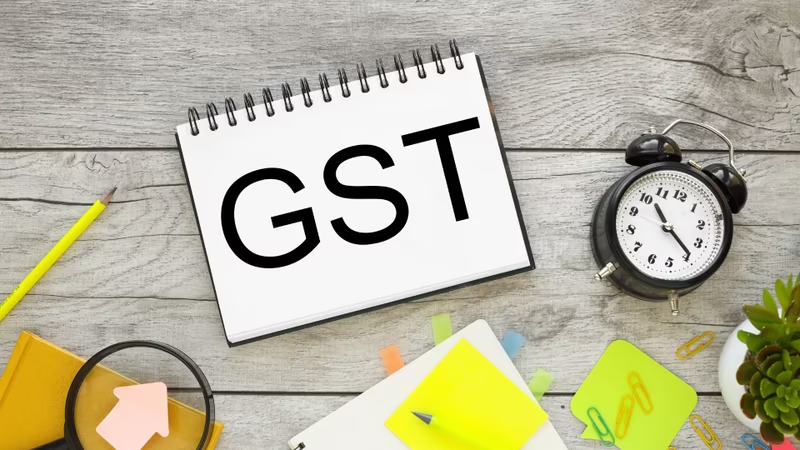The introduction of the Goods and Services Tax was a landmark moment in India's economic history. It streamlined a tangled web of multiple indirect taxes into a single tax structure.
At the heart of this transformation is the GST Act, a piece of legislation that has fundamentally reshaped how businesses operate across the nation.
Since its implementation on July 1, 2017, it has aimed to create a unified common market and improve compliance.
This guide will walk you through the critical aspects of this law, from its core meaning to the practical details of registration, invoicing, and compliance.
GST Act Meaning
At its core, the GST Act refers to the legislation governing the levy and collection of Goods and Services Tax in India. Let us break this down.
- Destination-Based: GST is levied at the point of consumption. Like, if goods are manufactured in Maharashtra and sold to a final consumer in Karnataka, the tax revenue goes to Karnataka.
- Multi-Stage: GST is imposed at every stage of the production and supply chain. From the purchase of raw materials to the sale to the end consumer, tax is levied at each step.
- Comprehensive: It has subsumed almost all previous indirect taxes, like excise duty, VAT, service tax, and central sales tax, creating a single tax.
What Are the Key Provisions Under the GST Act?
While the GST Act is vast, some of its provisions form the bedrock of the entire system. Understanding these is crucial for any business.
- Levy and Collection of Tax: The Act clearly defines what constitutes a 'supply' of goods or services, which is a taxable event. It specifies the rates at which GST will be charged and who is liable to pay the tax.
- Input Tax Credit (ITC): The Act lays down the conditions for claiming ITC. It mandates that a business can only claim credit if the tax has been paid by its supplier and the supplier has filed their returns.
- Reverse Charge Mechanism (RCM): Typically, the supplier of goods or services pays GST. However, under RCM, the liability to pay tax shifts to the recipient.
- Composition Scheme: To ease the compliance burden on small businesses, the Act provides a Composition Scheme. Eligible taxpayers with a specified turnover can opt to pay tax at a fixed, lower rate on their turnover without the hassle of detailed record-keeping and ITC claims.
- Place of Supply: These provisions determine whether a transaction is intrastate (within the same state) or interstate (between two different states).
GST Act and Rules (2025 Updated)
The legal framework of GST in India is not a single document but a set of coordinated laws. The GST Act and Rules consist primarily of:
- The Central GST (CGST) Act, 2017: This governs the levy of GST on intrastate supplies of goods and services by the central government.
- The State GST (SGST) / Union Territory GST (UTGST) Act, 2017: Each state and union territory has its own SGST or UTGST Act that governs the levy of GST on intrastate supplies by the respective state or union territory government.
- The Integrated GST (IGST) Act, 2017: This governs the levy of GST on all interstate supplies of goods and services and is collected by the central government.
- The GST (Compensation to States) Act, 2017: This act provides compensation to states for the loss of revenue they might incur due to the implementation of GST.
Alongside these acts, the government regularly issues rules, notifications, and circulars to clarify provisions and make procedural changes.
Documents Required Under the GST Act for Registration
A smooth registration process begins with having all the necessary paperwork ready. The specific GST registration documents required depend on the constitution of the business.
However, the main documents that everyone requires are:
- PAN Card
- Proof of identity
- Bank account statements
- Photographs
- Business address proof
- Proof of business registration
How to Apply for GST Registration Under the GST Act
The registration process under the GST Act is entirely online via the official GST Portal. Here is a simplified step-by-step guide:
Step 1: Visit the GST Portal: Go to the official government website.
Step 2: Fill Part A: Navigate to Services > Registration > New Registration. Fill in Part A of the form with your basic details, like PAN, mobile number, and email address. You will receive a Temporary Reference Number (TRN) after OTP verification.
Step 3: Fill Part B: Using the TRN, log in again and fill out Part B of the application. This is where you provide detailed business information and upload the required documents.
Step 4: Submit the Application: After filling in all details, submit the application using a Digital Signature Certificate (DSC) or an Electronic Verification Code (EVC).
Step 5: ARN Generation: An Application Reference Number (ARN) will be generated and sent to your registered email and mobile number.
Step 6. Verification and Approval: A tax officer will verify your application. If everything is in order, your GST registration certificate will be issued within 3-7 working days.
GST Certificate Under the GST Act
Once your application is approved, you will be issued a GST Registration Certificate in Form GST REG-06. This certificate includes your unique 15-digit Goods and Services Tax Identification Number (GSTIN).
The GSTIN is a PAN-based number that uniquely identifies your business. It is mandatory to display this certificate at your principal place of business and all additional places of business. You can download the certificate directly from the GST portal by logging into your account.
GST Act Invoice Format (As Per Rules)
Issuing a correct invoice is a fundamental compliance requirement. The GST Act invoice format is not a strict template, but Rule 46 of the CGST Rules mandates that a 'Tax Invoice' must contain the following fields:
- Supplier's name, address, and GSTIN
- A consecutive serial number (unique for a financial year)
- Date of issue
- Recipient's name, address, and GSTIN (if registered)
- HSN (Harmonised System of Nomenclature) code for goods or SAC (Services Accounting Code) for services
- Description of goods or services
- Quantity and unit of goods
- Total value of supply
- Taxable value of supply after discounts
- Applicable rate of tax (CGST, SGST/UTGST, IGST)
- Amount of tax charged, broken down into CGST, SGST/UTGST, and IGST
- Place of supply
- Address of delivery if it is different from the place of supply
- Whether tax is payable on a reverse charge basis
- A signature or digital signature of the supplier or their authorised representative
GST Act Compliance Essentials for Businesses
Beyond registration and invoicing, the GST Act mandates several ongoing compliance activities that businesses must manage diligently.
- GST Returns Filing: Businesses must file monthly or quarterly returns, primarily GSTR-1 and GSTR-3B.
- E-invoicing: For businesses with a specified aggregate turnover (currently ₹5 crore and above), generating e-invoices is mandatory for B2B transactions.
- E-Way Bill: For the movement of goods exceeding ₹50,000 in value, an e-way bill must be generated from the e-way bill portal before the transport begins.
Learn all about the Reverse Charge Mechanism (RCM) under GST.
Who Needs to Register Under the GST Act?
GST registration is mandatory for:
- Any business whose aggregate turnover in a financial year exceeds ₹40 lakh for suppliers of goods and ₹20 lakh for suppliers of services (the threshold is ₹20 lakh and ₹10 lakh respectively for Special Category States).
- Anyone making an interstate taxable supply of goods.
- Casual taxable individuals and non-resident taxable individuals.
- Businesses are liable to pay tax under the Reverse Charge Mechanism.
- E-commerce aggregators and those who supply through them.
- Input Service Distributors (ISD)
Final Word
Navigating the GST Act can seem complex, but its underlying principles are designed to create a more transparent and efficient business environment in India.
By understanding its core meaning and provisions, you can ensure your business adheres to the law and leverages the system to its advantage.
In the digital-first economy, understanding the structure of the GST Act is a non-negotiable step towards sustainable growth and success.
Download the Jar app to save money in digital gold.
Frequently Asked Questions
1. What is the GST Act in India?
The GST Act refers to the set of laws that govern the Goods and Services Tax in India. It is a comprehensive indirect tax levied on the supply of goods and services.
It replaced multiple older taxes, like VAT, service tax, and excise duty, creating a unified tax system under the "One Nation, One Tax" philosophy.
2. What are the documents required for GST registration?
The primary documents include the PAN card of the business/individual, proof of business address (like a rental agreement or electricity bill), bank account details and identity/address proof of the proprietors, partners or directors.
3. How is a GST invoice formatted under the GST Act?
There is no fixed format, but the GST Act invoice format rules mandate certain fields. These include the supplier's and recipient's GSTIN, invoice number and date, HSN/SAC codes, description and value of goods/services, tax rates, tax amounts (CGST, SGST, IGST) and place of supply.
4. What is the legal structure of the GST law?
The GST law has a dual structure. For transactions within a state (intra-state), both the Central GST (CGST) Act and the State GST (SGST) Act apply.
For transactions between states (interstate), the Integrated GST (IGST) Act applies, with the tax being collected by the centre.
5. How do I download my GST certificate?
You can download your GST certificate (Form GST REG-06) from the official GST portal.
- Log in to your account in the GST portal.
- Go to Services > User Services > View/Download Certificates.
- Click the download icon to save the certificate as a PDF.










